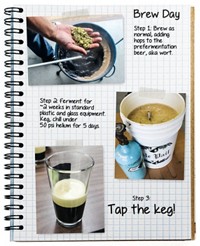Advertisement
Grab your lab coat. Let's get started
Welcome!
Welcome!
Create an account below to get 6 C&EN articles per month, receive newsletters and more - all free.
It seems this is your first time logging in online. Please enter the following information to continue.
As an ACS member you automatically get access to this site. All we need is few more details to create your reading experience.
Not you? Sign in with a different account.
Not you? Sign in with a different account.
ERROR 1
ERROR 1
ERROR 2
ERROR 2
ERROR 2
ERROR 2
ERROR 2
Password and Confirm password must match.
If you have an ACS member number, please enter it here so we can link this account to your membership. (optional)
ERROR 2
ACS values your privacy. By submitting your information, you are gaining access to C&EN and subscribing to our weekly newsletter. We use the information you provide to make your reading experience better, and we will never sell your data to third party members.
Food Science
What’s that Stuff
What's nitro cold brew, and why is it so damn delicious?
Researchers ponder how pushing nitrogen into specially brewed coffee imparts a smooth, creamy flavor
by Lisa M. Jarvis , Jessica Morrison
August 24, 2015
| A version of this story appeared in
Volume 93, Issue 33

Before Nate Armbrust was even working as a food scientist at Portland, Ore.-based Stumptown Coffee Roasters, he was daydreaming about how to push bubbles into a cold cup of coffee. Armbrust first tried carbonating coffee, but he quickly realized it was a terrible idea. “Coffee just doesn’t take acid the way juice or teas can,” he says. “When the CO2 becomes carbonic acid in solution, it just destroys the flavor.”
Then he started thinking about his home-brewing days and the appeal of Guinness poured fresh from the tap. That beverage is blended with nitrogen gas, which creates small bubbles that help stabilize a creamy head. Looking to replicate that creaminess with coffee, Armbrust struck upon the idea of pushing nitrogen gas into his cold coffee.
When he started working at Stumptown in early 2013, figuring out how to get the right amount of nitrogen into cold brew became a secret side project. After a month or so of playing with various times and pressures, he figured out the right balance of mouthfeel and flavor. With no small amount of trepidation, Armbrust took his concoction to colleagues. Thus was born Stumptown’s nitro cold brew. In June 2013, the hipster coffee gourmands put it on tap at their Portland café.
Stumptown’s coffee was one of the first nitro cold brews appearing at cafés around the country. Coffee lovers tout its frothy, creamy goodness, and Armbrust fields frequent calls from baristas interested in adding the product to their menu.
Nitro cold brew is made by percolating nitrogen gas through coffee that has either been brewed hot and then chilled or coffee that has been brewed in cold water. The coffee is often stored under pressure in a keg then poured straight from the tap. Just like Guinness, the foamy head comes from dissolved nitrogen bubbles. Nitro brew fans also claim that this foam helps the coffee retain a special flavor and aroma.
So what makes nitro cold brew taste so special? Researchers are only beginning to ponder this question. Certainly at the base of any good nitro cold brew is simply good coffee. The deliciousness of your cup of coffee—cold or hot—relies on a dizzying array of factors. From the bean you choose, to how you roast and grind it, to the intricacies of your brewing method, small changes have big impacts on the flavor molecules that end up in the coffee.
As a hot coffee cools, the flavor components undergo rapid changes in the headspace of your cup, notes Heather Smyth, a food science researcher at the University of Queensland, in Australia. Within the first few minutes of a hot brew, flavor components are actually changing, Smyth says. “Certain components are lost, while others are formed. Citrus notes disappear, while chocolate and black-currant notes become apparent as the coffee cools.”
Cold brewing, or allowing coffee grounds to steep overnight in cold or room-temperature water, should imbue a more constant flavor and aroma profile than that of hot-brew coffee because those molecules aren’t lost to steam, she explains.
Whether cold brewing does actually change composition of the flavor molecules dissolved in coffee, however, is not known. Armbrust notes that most coffee components are soluble in water, and allowing grounds to steep overnight should in theory allow just as many flavor molecules to be extracted in a cold brew. But no research has been published to establish exactly how cold brewing affects the molecular makeup, and thus the taste, of coffee.
Cold-brew lovers often cite its lower acidity as part of its appeal. But that lack of acidity is more about perception than pH, Armbrust believes. Chocolate and bright fruit flavors are the most prominent in cold brew, which tends to make it seem sweeter than hot-brewed coffee, he adds.
The beverage’s temperature is probably also altering the perception of its flavor. “Flavor is multisensory, and the temperature of coffee affects how you perceive it,” says Matthew Hartings, who teaches food chemistry at American University.
At Compass Coffee in Washington, D.C., where Hartings sampled a nitro-infused batch, the owners brew hot coffee with filtered water and cool it over ice before adding nitrogen under pressure. Michael Haft, co-owner of Compass Coffee, says anecdotal evidence suggests that the nitrogen is extending the life of the coffee.
As coffee ages in the pot, oxidation swiftly breaks down the originally robust flavor molecules, which is why good shops brew in small batches or toss out unsold quantities after 30 minutes, Haft says.
The nitrogen that Haft and co-owner Harrison Suarez bubble through their beloved brew is likely making the coffee more stable by pushing oxygen out of the liquid, Hartings says.
At Compass, Hartings was eager to see if the process also affects the pH of the coffee. If enough dissolved carbon dioxide is also pushed out by the nitrogen, the coffee should become less acidic, and therefore sweeter. He whipped out a pack of pH indicator strips to test his theory, but there was no noticeable difference.
“We definitely don’t have it all figured out,” Suarez says. Chemists, your coffee analysis help is needed.
UPDATE: This article was modified on August 9, 2017 to refresh its information and data.





Join the conversation
Contact the reporter
Submit a Letter to the Editor for publication
Engage with us on Twitter